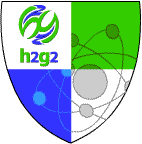Dutch Grammar
Created | Updated Sep 2, 2012

The Netherlands: Introduction | Topography | Facts and Figures | Polders and Dykes | The Dutch National Anthem | Dutch - the Language | Dutch Pronunciation | Dutch Grammar | Handy Dutch Phrases | The Dutch | Transportation in the Netherlands
Some parts of Dutch grammar are easy to master, for example verbs and plurals are fairly simple. Other parts like article use are difficult for foreigners due to the fact that it is seemingly random!
Articles
Dutch has three articles - similar to the English words 'the', 'a/an':
De - meaning 'the', and used for male and female words. For example, de man, meaning 'the man'.
Het - also meaning 'the' and used for genderless words. For example, het huis, meaning 'the house'.
De and Het are very difficult to master for a non-native speaker as there are no obvious rules for which words take which. The fact that an object has a gender does not mean that the word has the same gender. For example, it is het beest - 'the animal' - whatever the gender of the animal in question.
Een - meaning 'a' or 'an', and can be used for all words (except plurals, obviously). Een should not be confused with éé which means 'one'.
Luckily there are some rules that make it easier. Plural words are always de. Also in Dutch you can add je to the end of any noun to mean a smaller version of it. For example a tas is a bag and a tasje is a small bag (handbag, shopping bag, etc). All these words, ending in -je, use het.
Plurals
Plurals in Dutch are made by adding an s or en to the end of the word. This is fairly irregular, but some broad rules can be observed:
Most words ending in a vowel need an addtion of s to make them plural.
Most words ending in an s-sound ('x', 's', etc) need the addtion of en to make them plural, although you may sometimes need to add a consonant or subtract a vowel.
Most words originating from English need the addtion of s to make them plural.
Most of the rest need en to make them plural, although you may need to add a consonant or subtract a vowel.
Verbs
The conjugation of verbs is much more complex in Dutch than in English, but usually follows a simple set of rules. Take for example the verb knielen - 'to kneel'. The conjugation is thus:
| Dutch | English |
|---|---|
| Ik Kniel | I kneel |
| Jij Knielt | You (singular) kneel |
| Hij Knielt | He kneels |
| Wij Knielen | We kneel |
| Jullie Knielen | You (plural) kneel |
| Zij Knielen | They kneel |
| Dutch | English |
|---|---|
| Ik Knielde | I knelt |
| Jij Knielde | You (singular) knelt |
| Hij Knielde | He knelt |
| Wij Knielden | We knelt |
| Jullie Knielden | You (plural) knelt |
| Zij Knielden | They knelt |
| Dutch | English |
|---|---|
| Ik zal Knielen | I will kneel |
| Jij zal Knielen | You (singular) will kneel |
| Hij zal Knielen | He will kneel |
| Wij zullen Knielen | We will kneel |
| Jullie zullen Knielen | You (plural) will kneel |
| Zij zullen Knielen | They will kneel |

